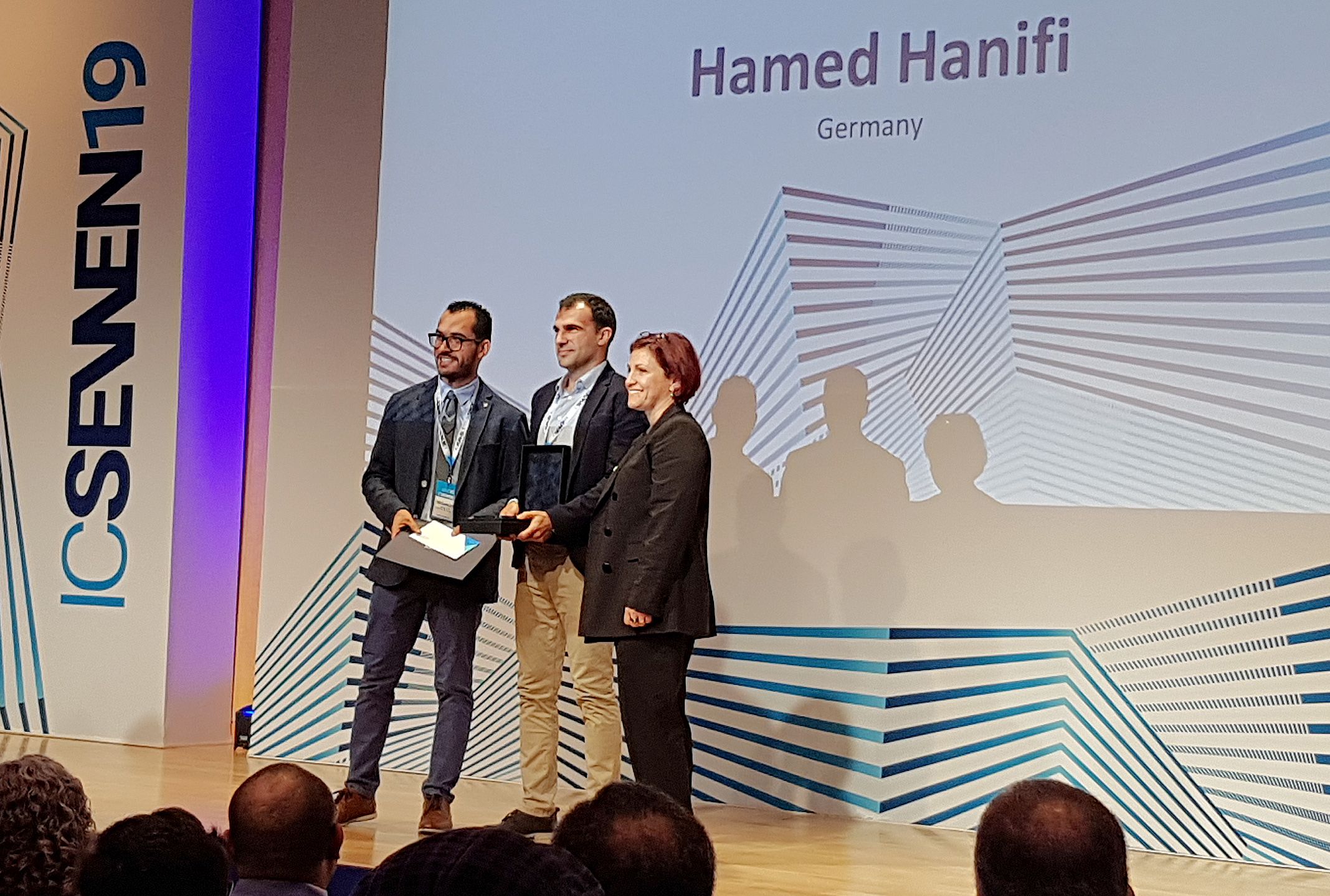Hamed Hanifi from Fraunhofer CSP honored for »Best Student Oral Presentation« at IC-SEWEN19
At the International Conference on Sustainable Energy-Water-Environment (IC-SEWEN 19) in Qatar, Hamed Hanifi from the Fraunhofer Center for Silicon Pho-tovoltaic CSP was awarded for the "Best Student Oral Presentation" in the conference’s energy track. His presentation presented how solar modules should be interconnected and mounted in desert areas in order to reduce the yield loss from soiling.

The earth's solar belt is ideal in several ways to use photovoltaics to generate electricity: there is high dose of sun irradiation, and there is plenty of space in the uninhabited areas to build large-scale solar systems. The current rates of build-up in these regions are correspondingly high. However, the yields of solar power from the desert decrease when sand or dust is polluting the solar modules and thus less light reaches the solar cells.
The Fraunhofer CSP in Halle (Saale) is dedicated to this problem called "soiling" in many ways. In his lecture "Optimum PV Module interconnection layout and mounting orientation to reduce inhomogeneous soiling losses in desert environment" at the international conference, Hamed Hanifi demonstrated that both an adapted interconnection of the cells can help against soiling effects and a special procedure for the mounting of photovoltaic modules in desert regions is recommended.
Hamed Hanifi focused on inhomogeneous soiling. Inhomogeneous soiling by accumulation of dust on the bottom part of the PV module can influence the output power of the modules drastically and by inducing partial shading increases the temperature of the shaded area. By considering the harsh climate in desert areas, this can increase the risk of hot-spots and failure of the PV modules. To avoid this, adjustments in cell size, electrical interconnection and mounting orientation of the modules are the right measures.
In his study, Hanifi examined three different module designs, each looking at the effects of soiling in the corners and along the edges of a module. Full and half cells as well as different interconnection designs were used and the corresponding modules were installed in two mounting orientations, taking into account the specifics of the respective landscape. The simulation results were verified by experimental data. It turns out that the correct selection of cell sizes, an adapted electrical interconnection and favorable mounting positions can increase the output power of a module by up to 65 percent compared to the standard modules in the market. »This boosts the efficiency of the desert modules and supports planning decisions by plant operators. They can now calculate which countermeasures against inhomogeneous soiling are possible and rewarding," Hanifi says of his results.